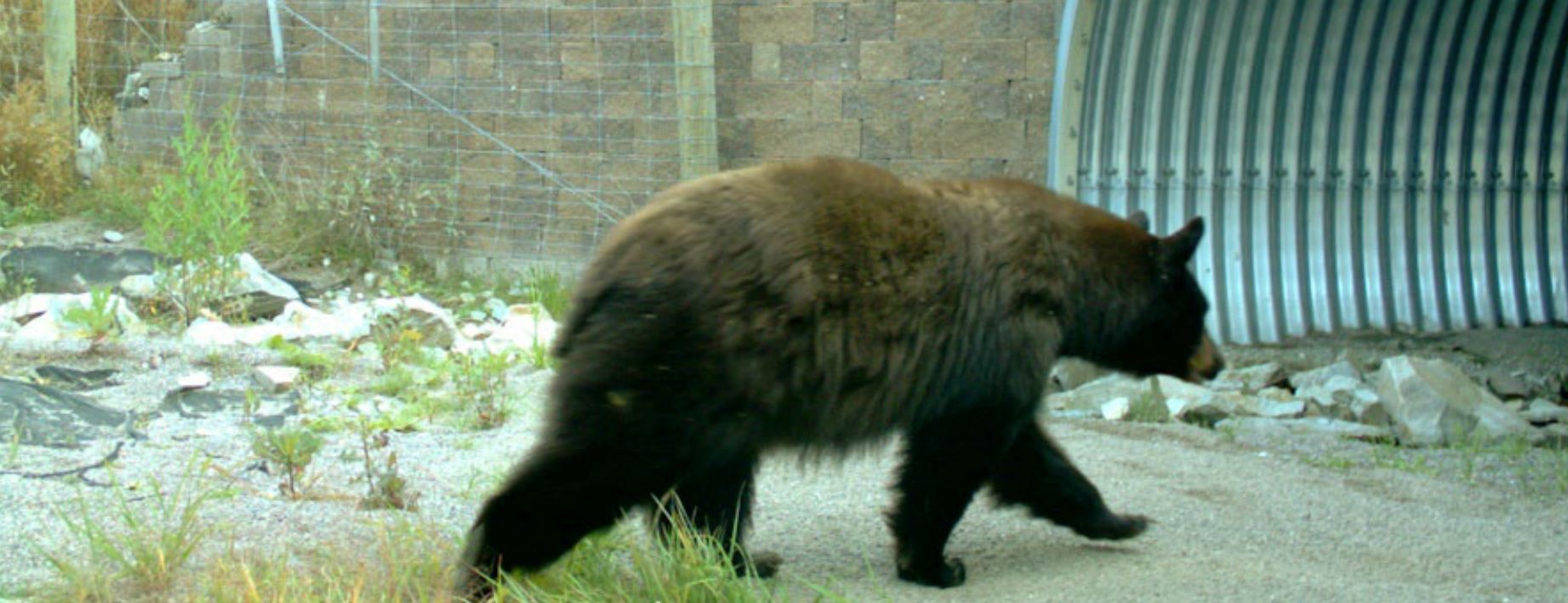Bridges for Bears
When my family moved to a small acreage surrounded by corn fields I learned about the conflicts between deer and vehicles. While I was never in the clear, I needed to be especially cautious in the fall when driving near dusk. I have had several close calls, one deer leaving a dent in my hood as it glanced the side of the car and continued running. In most areas, this conflict between nature and man is unavoidable, however I recently found out that on some major highways they have found a solution.
When Highway 93 in Montana was due for improvements and expansion, the Department of Transportation, working with the Confederated Salish and Kootenai Tribes came to a design solution that benefited everyone, including the animals. The new expanded highway included 41 wildlife underpasses and one overpass, special highways just for animals. Some of the underpasses include streams with fish and amphibians and others have fencing to guide animals under the busy highway.
A bear using the I-93 underpass (photo courtesy of Peoples Way Wildlife Crossing)
The animal highway concept also appears on the longest stretch of interstate, I-90 which runs between Seattle and Boston for over 3,000 miles. The portion that received the animal friendly installation lies east of Seattle at the Cascade Range. In an agreement with the U.S. Forest Service to provide safe passage for elk, mountain lions, and wolverines, the Washington State Department of Transportation designed three overpasses and 24 underpasses. The precast concrete bridge will provide a 150 foot-wide path for animals beginning in 2019 at the projected completion of construction.
Rendering for the animal overpass over the I-90 bridge (photo courtesy of seattletimes.com)
You may imagine a bridge like cars drive over, however it is far from that. Each overpass is designed with soil, trees, and native plants to function as a continuation of the forest the animals walked out of. To further protect the natural environment, walls on each side of the bridge shield animals from headlights. It may also seem odd that animals would choose to use the bridges as if they read a sign. Instead they will be directed by sturdy and tall fencing that funnels the animals into these particular crossing segments instead of traffic.
A moose being encourage to the overpass through installed fencing (photo courtesy ofPeoples Way Wildlife Crossing)
While the decision to spend additional money on transportation projects may seem to stem from respect for wildlife, it also projects humans too. Animal-vehicle collisions have killed more than 200 people annually in the United States and injure 26,000 according to an article in Planning Magazine (Keeping Hoofs Off Hoods). That same article notes that these projects have "reduced collisions by more than 80 percent altogether for large mammals, including bears and wolves, and by more than 95 percent for ungulates like elk, moose, and deer, according to the Western Transportation Institute's Clevenger."
“The People’s Way Crossing has seen over 53,600 wildlife uses from 2010-2012 by over 30 species”
Cost of these projects is significantly outweighed by the costs associated with animal collisions. In 2008, the Federal Highway Administration estimated the loss of human life to be $8.4 billion annually. Over 1.3 million insurance claims were lodged during the 2016 cycle according to a State Farm Insurance study.
While the idea of wildlife bridges is new to me, it is not a new concept in transportation planning. The first bridges were constructed in the 1970's in New Jersey and Utah. Florida installed 23 underpasses to allow for Alligator Alley. Canada has even joined the group, building six overpasses and 38 underpasses along the Trans-Canada Highway beginning in 1982.
The wildlife bridge over I-75 in Florida (photo courtesy of the Life As Ty See's It blog)
Building bridges for bears...and elk, wolves, deer, frogs and any other wildlife is an important consideration. The loss of life, both human and animal, should never be discounted. The negative impacts to wildlife populations created by highways cutting through their habitat causes long term damage. These creative, but simple ways to reduce collisions may come with additional costs, but they resolve themselves over time as fatalities decrease. As Rob Ament, road ecology program manager for the Western Transportation Institute, said, we need to make constructing wildlife permeability (adding bridges and underpasses) a routine part of building roads.










